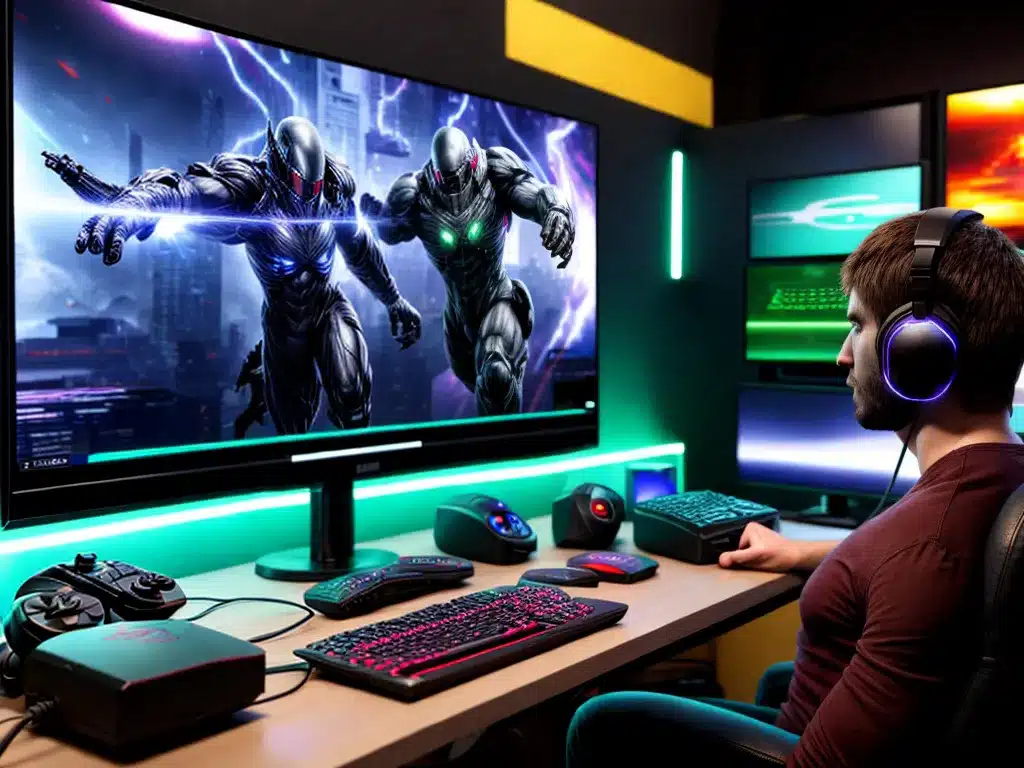
Getting the best graphics settings dialed in can make a huge difference in your gaming experience. The right settings can maximize frame rates and make games look incredible. On the other hand, the wrong settings may cause performance issues or make games look worse.
Here are 12 of the most important graphics settings to adjust for optimal gaming performance:
Resolution
Resolution has a massive impact on gaming performance and visuals. Higher resolutions like 1440p and 4K put more strain on your graphics card but make games much sharper. I prefer to run games at my monitor’s native resolution for optimal image quality.
For weaker graphics cards, lowering the resolution can significantly boost frame rates. Just remember, lower resolutions will make the picture less crisp. Find a balance between performance and visual fidelity.
Refresh Rate
The refresh rate determines how many frames per second (fps) your monitor can display. Higher refresh rates (120Hz, 144Hz, 240Hz) allow your monitor to show more frames, leading to much smoother gameplay.
I always aim for frame rates to match or exceed my monitor’s refresh rate. Falling below your refresh rate introduces stutter and lag.
Field of View (FOV)
Field of view (FOV) sets how much peripheral vision is visible on screen. Higher FOV can make it easier to track targets and be more aware of your surroundings in multiplayer games.
However, increasing FOV also decreases performance. I slowly raise my FOV until I find a good balance between awareness and frame rate.
Frame Rate Limit
A frame rate cap stops your game from rendering more frames than your monitor’s refresh rate. Limiting fps to your refresh rate or slightly below prevents screen tearing without using demanding sync technologies like V-Sync.
Uncapped frame rates waste GPU resources. I enable frame rate limits set to my monitor’s refresh rate. This locks fps steady while freeing up headroom.
V-Sync
V-Sync (vertical sync) synchronizes your GPU’s frame rate output with your monitor to eliminate screen tearing. However, it also introduces input lag and stutter as frames wait in a queue to sync with your display.
I usually keep V-Sync disabled for competitive multiplayer titles. The lower latency is advantageous. For slower paced, story-driven games, I’ll enable it to enjoy a tear-free picture.
Anti-Aliasing (AA)
Anti-aliasing smoothes out jagged edges on objects. It makes games look less pixelated and more natural. Enabling AA comes at a considerable performance cost.
I disable AA if I’m struggling to hit my target frame rate. Otherwise, 4x or 8x MSAA provides a great blend of image quality and speed. More modern AA modes like TXAA also work well.
Texture Quality
Higher texture quality settings display more detailed surfaces with less blur and filtering. This improves environmental details without a big performance hit.
I max out texture quality when possible. Lower settings make textures muddy and blocky. If VRAM becomes limited, I’ll gradually lower texture quality until issues resolve.
Shading Quality
Shading determines lighting and shadow fidelity. Higher settings (Ultra, High) equate to more realistic, natural lighting. Lower settings exhibit banding, false shadows, and dull colors.
Maximize shading quality first, then adjust other demanding settings until you achieve an optimal frame rate. Solid shading goes a long way in image realism.
Shadow Quality
Like shading, the shadow quality setting controls fidelity of shadows. Higher settings render shadows at longer distances with realistic penumbras.
Medium or High shadow settings strike the best balance. Ultra has a huge performance penalty with little visual improvement over High. I avoid Low, as shadows appear rough and jagged.
Post Processing
Post-processing handles effects like bloom, motion blur, ambient occlusion, etc. These settings have varying impacts on performance.
I enable post-processing features selectively. Motion blur and depth of field are too demanding. Bloom and ambient occlusion provide visual polish without a big fps hit.
View Distance
View distance, also called draw distance, handles how far you can see in an open world game. Higher values increase visible geometry and characters at a distance.
I increase view distance until distant scenery appears properly rendered. Boosting it far beyond that for marginal gains tanks fps. Find a good medium point.
Grass Density
Higher grass density populates open world environments with more foliage, enhancing landscapes. This quickly brings GPUs to their knees.
I turn grass density down until performance steadies, then gradually increase it until the fps hit becomes noticeable. Lush grass isn’t worth tanking frame rates over.
Volumetric Fog
Volumetric fog adds realistic clouds of mist throughout game worlds. While beautiful, it is immensely taxing.
I disable volumetric fog first when optimizing performance. It devours GPU resources for limited visual payoff. Simple fog effects still enhance mood nicely.
Optimizing Performance
The key is balancing graphical fidelity and frame rates. Monitor fps and GPU usage. Lower settings that are choking performance without major visual downsides. Take an incremental approach rather than minimizing everything. A few tweaks here and there goes a long way.
With these graphics settings tuned properly, you can maximize both gaming performance and visuals. Take the time to dial in these options for each game and you will be rewarded with buttery smooth framerates and stunning image quality.












